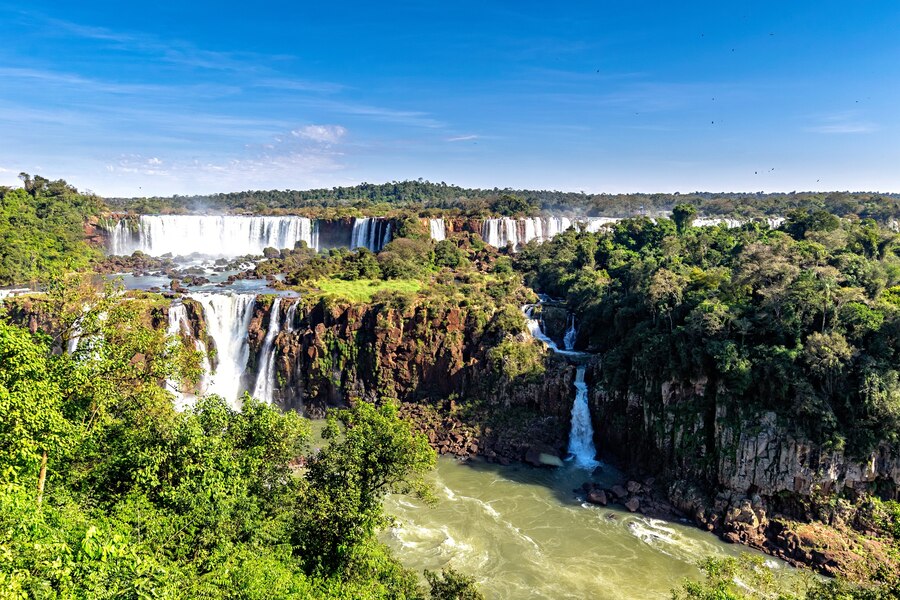South America is home to an incredible array of UNESCO World Heritage sites that reflect its rich history, cultural diversity, and natural beauty. From ancient ruins and colonial cities to unique ecosystems and vibrant indigenous cultures, the continent offers a wealth of experiences for travelers and history enthusiasts alike. In this article, we explore some of the top UNESCO World Heritage sites in South America, highlighting their significance, historical context, and what makes them must-visit destinations.

1. The Historic Centre of Quito, Ecuador
Quito, Ecuador's capital, is a city that boasts a captivating blend of Spanish colonial architecture and indigenous heritage. Founded in the 16th century, the historic center of Quito is one of the best-preserved in Latin America. The city's churches, monasteries, and government buildings are exquisite examples of Spanish Baroque architecture, often adorned with intricate gold leaf and religious art. Quito is also the best-preserved of all Spanish colonial cities in the Americas, offering visitors an immersive experience into Ecuador's history and culture. Notable sites include the Independence Square, La Compañía Church, and the Monastery of San Francisco. Read More
2. The Historic Centre of Salvador de Bahia, Brazil
Salvador de Bahia, in northeastern Brazil, is a city with a rich Afro-Brazilian culture, vibrant music, and history. Its historic center, a UNESCO World Heritage site since 1985, is one of the best-preserved colonial areas in the Americas. The city reflects a unique cultural fusion of European, African, and indigenous influences, which is evident in its architecture, music, and traditions. Visitors can explore the Pelourinho, the heart of Salvador, which is filled with colorful colonial buildings, churches, and squares. The site is also home to the most celebrated Afro-Brazilian festivals, such as Carnival and the Festa de Yemanjá. Read More
3. Iguazu National Park, Argentina and Brazil
The Iguazu National Park, straddling the borders of Argentina and Brazil, is a natural wonder of cascading waterfalls and lush rainforest. Known as the "Iguazu Falls," this UNESCO site is one of the largest and most impressive waterfall systems in the world, with over 275 individual falls. The park is a paradise for nature lovers and ecotourists, offering an array of activities such as hiking, bird-watching, and boat tours. The rich biodiversity here includes jaguars, monkeys, and a wide variety of bird species, making it a crucial site for conservation. Read More
4. The Historic Town of Ouro Preto, Brazil
Nestled in the mountains of Minas Gerais, Ouro Preto is a historic town that once served as the center of Brazil’s gold rush in the 18th century. The town’s colonial architecture, including churches, town squares, and houses, reflects the opulence of the era. Ouro Preto is renowned for its well-preserved Baroque architecture and is considered one of the best examples of colonial urbanism in the Americas. The town is also home to several important works of art, including statues by the renowned sculptor Aleijadinho. Read More
5. The Quebrada de Humahuaca, Argentina
The Quebrada de Humahuaca, a narrow valley stretching over 150 miles in the northwest of Argentina, is a stunning landscape of colorful cliffs, high-altitude deserts, and picturesque villages. This UNESCO site offers a glimpse into the Andean lifestyle and the indigenous cultures that have thrived in the region for centuries. The valley is dotted with historical monuments, such as the Pucará de Tilcara, an ancient fortress built by the indigenous people of the region, and the Church of Our Lady of the Candelaria. The Humahuaca Valley is a UNESCO World Heritage site not only for its breathtaking natural beauty but also for its cultural significance. Read More
Comparison Table:
| Site | Country | Year Inscribed |
|---|---|---|
| Historic Centre of Quito | Ecuador | 1978 |
| Historic Centre of Salvador de Bahia | Brazil | 1985 |
| Iguazu National Park | Argentina/Brazil | 1984 |
| Historic Town of Ouro Preto | Brazil | 1980 |
| Quebrada de Humahuaca | Argentina | 2003 |
Frequently Asked Questions:
Q1: What makes UNESCO World Heritage sites so important?
UNESCO World Heritage sites are designated to recognize and protect sites of outstanding cultural or natural significance. These sites contribute to a shared global heritage and play a vital role in tourism, conservation, and education. They represent milestones in human history and the environment, and they help promote cultural diversity and respect for different traditions. Read More
Q2: How can I visit these UNESCO sites in South America?
Visiting these sites requires planning and often involves exploring remote regions. For example, reaching Quebrada de Humahuaca might require a car journey through mountainous terrain, while Iguazu National Park offers multiple entry points, including Puerto Iguazu in Argentina and Foz do Iguaçu in Brazil. Most UNESCO sites are accessible via local transport or guided tours, providing opportunities to enjoy both natural beauty and historical sites. Read More
Q3: What is the best time to visit these UNESCO World Heritage sites?
The best time to visit these sites in South America varies. For Iguazu National Park, the rainy season from December to March provides dramatic waterfall views, but expect crowds. Quito's year-round mild climate makes it a great destination any time. Salvador de Bahia enjoys warm weather year-round, with February's Carnival being the highlight. For Ouro Preto, the mild autumn months of April and May offer the best weather for exploring its Baroque architecture. Read More
Conclusion:
South America is a continent that beckons travelers with its diverse landscapes, rich history, and vibrant cultures. The UNESCO World Heritage sites scattered across the region provide a unique window into its past and present, from the bustling streets of Quito to the lush rainforests of Iguazu. These sites not only offer unforgettable experiences but also serve as important reminders of the need to preserve our shared heritage for future generations. Whether you are an adventure-seeker, a history buff, or a nature lover, South America’s UNESCO sites offer something for everyone.
Read Also:
